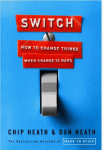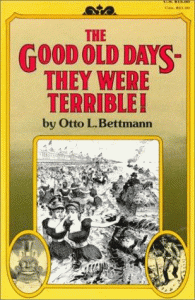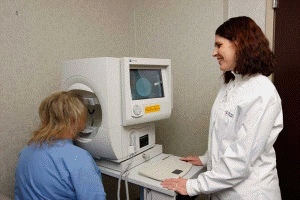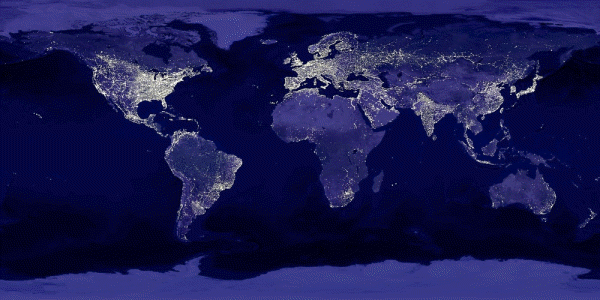When Jerry Sternin arrived in Vietnam, the welcome was rather chilly. The government had invited his employer, Save the Children, the international organization that helps kids in need, to open an office in the country in 1990 to fight malnutrition. But the foreign minister let Sternin know that not everyone in the government appreciated his presence. The minister told him, “You have six months to make a difference.”
Sternin had traveled to the country with his wife and 10-year-old son. None of them spoke the language. “We were like orphans at the airport when we arrived in Vietnam,” he said. “We had no idea what we were going to do.” Sternin had minimal staff and meager resources.
The conventional wisdom was that malnutrition was the result of an intertwined set of problems: Sanitation was poor. Poverty was nearly universal. Clean water was not readily available. The rural people tended to be ignorant about nutrition.
That analysis was, in Sternin’s judgment, TBU — true but useless. “Millions of kids can’t wait for those issues to be addressed,” he said. If addressing malnutrition required ending poverty and purifying water and building sanitation systems, then it would never happen. Especially in six months, with virtually no money to spend.
Ignoring the experts, Sternin traveled to a local village and called together all the village’s mothers. He asked for their assistance in finding ways to nourish their kids better, and they agreed to help. As the first step, they went out in teams to weigh and measure every child in the village. Then, they pored over the results together with Sternin.
He asked them, “Did you find any very, very poor kids who are bigger and healthier than the typical child?” The women, scanning the data, nodded and said, “Có, có, có.” (Yes, yes, yes.)
He said, “You mean it’s possible today in this village for a very poor family to have a well-nourished child?”
“Có, có, có.”
“Then let’s go see what they’re doing.”
What happened next changed the face of hunger in Vietnam … and around the world. Within six months, starting in that one village, Sternin’s efforts had made amazing improvements in the health of children in 265 villages and impacted over 2 million people. The “method” he used has been systematically applied since then to improve health, education, and business in over 40 countries around the world.
 I first heard about Sternin’s method in a best-selling book titled Switch: How to Change Things When Change Is Hard by Chip and Dan Heath. My husband, daughter, and I all read the book, and were so impressed with its contents that we ended up attending a live presentation by Chip Heath in Atlanta in 2010. Chip re-told the story there also, and what a story it is!
I first heard about Sternin’s method in a best-selling book titled Switch: How to Change Things When Change Is Hard by Chip and Dan Heath. My husband, daughter, and I all read the book, and were so impressed with its contents that we ended up attending a live presentation by Chip Heath in Atlanta in 2010. Chip re-told the story there also, and what a story it is!
When Sternin helped the local ladies in the Vietnam village examine what was causing a minority of poor children to thrive in spite of their poverty, they came up with just a few basic answers. The “average” mother in the village fed their young children twice a day, along with the rest of the family. Their diet consisted almost entirely of just white rice, with no added protein or vegetables of any kind—this was “what they’d always done” as the best way to feed small children in their local culture. But it was discovered that the mothers of the “above average” children had bucked tradition. They fed their children smaller servings, four times a day. And they chose, against tradition, to include tiny shrimp and crabs from the rice paddies in the cooking rice (eaten by adults, but considered not appropriate for children), along with sweet potato greens (considered a low-class food and avoided by most.)
In addition, instead of just assuming the child would “self-feed” enough by being at the table with others and a big family bowl of rice, these mothers took an active role in encouraging the small child to eat … including when a child was sick with diarrhea—a circumstance when “conventional wisdom” said to not feed children. It turned out that the malnourished children’s bodies could not assimilate the larger amounts of food in the twice daily feedings, so they were getting even less nutrition than expected. The four smaller meals were much better for small stomachs. And the protein and vitamins in the shrimp and crabs and potato greens were enough to make a real difference in health in spite of the meagerness of the diet.
 Armed with this information, the mothers were encouraged to set up a “demonstration kitchen” to show the other mothers in the village how to incorporate these improvements in childcare. Within a short time, 60% of the children in the village showed significant improvement. Word got out, and before long villages all over the country were sending delegations to learn how to do the same thing.
Armed with this information, the mothers were encouraged to set up a “demonstration kitchen” to show the other mothers in the village how to incorporate these improvements in childcare. Within a short time, 60% of the children in the village showed significant improvement. Word got out, and before long villages all over the country were sending delegations to learn how to do the same thing.
Chip and Dan Heath refer to this “method” of finding ways to make positive changes in the world as “finding the Bright Spots.” Sternin didn’t go into Vietnam and try to “change the darkness” by sheer effort—which wouldn’t have worked anyway. With little money and few staff members, they couldn’t tackle “ending poverty” on a grand scale. But they could “find the bright spots and clone them,” with minimal financial investment and manpower! (For more, see the whole chapter of the Heath book that covers this topic from Fast Company magazine.)
Have You Seen the Light?
All this got me to thinking a while back about “Finding Bright Spots.” For, you see, I get emails all the time, and read posts on forums and Facebook all the time, from people who specialize in finding–and griping endlessly about–Dark Spots in the contemporary world around them. Now mind you, I know that there is a lot of darkness in this old world! In fact, as a fairly well-read student of history, I know that most of mankind’s history has been loaded with darkness.
 Don’t like the current regime in Washington? Think they are scoundrels out to just manipulate the voters and put in place their own agenda? Well … I don’t think you’d have been any happier with “Tammany Hall” and similar corrupt governmental environments in the earlier history of the US. Not happy with “Big Business” and its self-serving control of just about every aspect of life? Me either … but I doubt either of us would have been much happier in the late 1800s. Some of the famous fellows of that time weren’t called “Robber Barons” for no reason! And Tennessee Ernie Ford’s famous song lamenting “I owe my soul to the company store” certainly indicates past generations weren’t all “The Good Old Days.” In fact … as one of my favorite books documents, as reflected in its title, The Good Old Days—They were Terrible!
Don’t like the current regime in Washington? Think they are scoundrels out to just manipulate the voters and put in place their own agenda? Well … I don’t think you’d have been any happier with “Tammany Hall” and similar corrupt governmental environments in the earlier history of the US. Not happy with “Big Business” and its self-serving control of just about every aspect of life? Me either … but I doubt either of us would have been much happier in the late 1800s. Some of the famous fellows of that time weren’t called “Robber Barons” for no reason! And Tennessee Ernie Ford’s famous song lamenting “I owe my soul to the company store” certainly indicates past generations weren’t all “The Good Old Days.” In fact … as one of my favorite books documents, as reflected in its title, The Good Old Days—They were Terrible!
Not happy with the proliferation of sexual immorality? Me either. But I doubt either of us would have been happy living in the neighborhoods around the 1893 Chicago World’s Fair (“The White City” it was called). The very vivid descriptions in a book titled Sin in the Second City: Madams, Ministers, Playboys, and the Battle for America’s Soul make it very clear that there’s nothing new under the sun. Describing one of the very famous and very public bordellos of the turn of the last century in Chicago, the author writes, “While lesser whorehouses specialized in deflowering virgins, beatings and bondage, the Everleighs spoiled their whores with couture gowns, gourmet meals and extraordinary salaries. The bordello—which boasted three stringed orchestras and a room of 1,000 mirrors—attracted such patrons as Theodore Dreiser, John Barrymore and Prussian Prince Henry.”
Inheritors of the reputation of Sodom and Gomorrah have ever been with us—even during periods such as the so-called prim-and-proper “Victorian” era, and the allegedly “squeaky clean” period of the 1950s … that were only squeaky-clean on the TV sitcoms.
I do myself write about some of the Dark Spots of American history in my blogs and websites. But not to just rant about and bemoan them. I write to educate people about ignored or forgotten pieces of history so that they can be part of expressing national regret and repentance for those things, and understanding the roots of that darkness so that we can…root out out such things in the present and work together to make a brighter future for our country. And our own children and grandchildren.
YES, there are awful things going on in western society now—as there always have been. But is it even slightly possible that there may actually be … more Bright Spots in the world than some folks are able to admit?
Is it possible that maybe, just maybe, we really aren’t “right on the edge of the Tribulation” and God may intend for this old world to go on a while longer? Or even … a lot longer? If so, we have a choice. We can spend our generation hunting out and pointing at all the dark spots … or we can choose to find those Bright Spots and … clone them.
And that reminds me of another Spotty Story.
 In 2010, the “Transitions” coating on my eyeglasses was beginning to peel off the lenses. The warranty on the glasses had expired, so the only choice was to get new glasses. I hadn’t been to the optometrist in about four years, but didn’t really need an eye test for a new prescription, as the old prescription was working just fine for me. I would have been happy to just turn in the old glasses and say, “Please clone these for me.” But optometrists don’t make money if they just pass out glasses with no exam! You have to go through the proper procedure, and get a new prescription if a certain amount of time has passed. So I made my appointment.
In 2010, the “Transitions” coating on my eyeglasses was beginning to peel off the lenses. The warranty on the glasses had expired, so the only choice was to get new glasses. I hadn’t been to the optometrist in about four years, but didn’t really need an eye test for a new prescription, as the old prescription was working just fine for me. I would have been happy to just turn in the old glasses and say, “Please clone these for me.” But optometrists don’t make money if they just pass out glasses with no exam! You have to go through the proper procedure, and get a new prescription if a certain amount of time has passed. So I made my appointment.
After the perfunctory eye chart, the Doc peered into my pupils with his little gadget. The more he peered, the more agitated he got. He didn’t exactly scream at me, but he told me in no uncertain terms that he was going to instruct his secretary to call a local ophthalmologist and insist that I be admitted for an exam the very next day. He tried to explain his concerns, but evidently didn’t want to alarm me totally … just to firmly convey that I really, really needed to have a specialist follow up on what he was seeing.
 So off I went the next day to Dr. Bob the Ophthalmologist. I had never been aware of any particular problem with my eyes, so had never had this kind of extensive exam procedure. There was more pupil-peering, first with the doc’s own eyes, then with a camera that took pictures of the inside of my eyeballs. The pressure inside my eyes was checked with another gadget. Then there was the “vision field” machine test. I had first my right eye, then my left eye covered, put my chin on a little cup, stared into the center of a sort of bowl in front of me, and clicked on a computer mouse whenever I saw a little spot of bright light scattered somewhere on the surface of the bowl out of the “corner of my eye.”
So off I went the next day to Dr. Bob the Ophthalmologist. I had never been aware of any particular problem with my eyes, so had never had this kind of extensive exam procedure. There was more pupil-peering, first with the doc’s own eyes, then with a camera that took pictures of the inside of my eyeballs. The pressure inside my eyes was checked with another gadget. Then there was the “vision field” machine test. I had first my right eye, then my left eye covered, put my chin on a little cup, stared into the center of a sort of bowl in front of me, and clicked on a computer mouse whenever I saw a little spot of bright light scattered somewhere on the surface of the bowl out of the “corner of my eye.”
When all was said and done, I was left sitting in the exam chair alone for a few minutes while the doc went away to look at printouts from the vision machine’s computer, and pics from the camera. He came back very somber. And he said, “I hate to have to tell you this, but you have lost 90% of the vision in both eyes.” At that instant, I honestly thought he was making some very, very tacky joke at my expense! Because there was nothing in particular wrong with my sight other than needing some fairly mild prescription glasses to adjust for some astigmatism. I could see him totally clearly, could see everything in the room totally clearly. I could read some of the smallest letters on his eyechart, and had no trouble reading traffic signs or billboards. What kind of lame joke was this, “90% of my vision”?
I quickly found out it was no joke. And he didn’t exactly mean I had lost the ability to see 90% of what was in front of me. What he meant was that 90% of my optic nerves—in both eyes—were totally gone! He could see gaping holes in the back of my eyes where most of the optic nerves should have been. Just how bad was it on the practical level of actually being in danger of losing what I thought was my clear vision? That was the purpose of the vision field test—it had shown that I had gaps all over the place in my vision… where the optic nerve fibers no longer existed. Huge numbers of nerves in the optic nerve bundles had been silently and insidiously destroyed by a degenerative disease I evidently had had from birth, an unusual type of glaucoma. My mind was still “filling in the gaps,” where all those tiny pin-pricks were missing, but sooner or later … probably sooner if nothing was done … it would be overwhelmed by the missing pieces and my actual sight would deteriorate quickly.
Most glaucoma, which can lead to “tunnel vision” that then deteriorates down to total blindness if treatment isn’t successful, is caused by excessively high internal pressure in the eye. The pressure destroys the optic nerve. But my eye pressures were totally normal. Yet the optic nerves were degenerating anyway. He warned me to contact any siblings I had who were still alive and warn them … this was a condition that usually affected all children of a set of parents, but evidently wasn’t inherited by their children. (I later contacted my sister, she had an exam, and indeed had the same syndrome, only not as advanced.)
The bottom line—nothing could restore the destroyed portions of the optic nerves. The fibers were permanently gone. And the situation was on the very edge of leading directly to blindness if the destruction wasn’t slowed down or stopped. But there is no specific treatment to stop the degeneration. The only treatment possible was to lower the internal eye pressure as far below normal as possible … I guess without being low enough for my eyeballs to collapse! Evidently, any excess pressure at all could speed up the degeneration, and eliminating it might slow it down significantly.
So since that time, I have been putting two different prescription eyedrops in my eyes twice a day to try to lower that pressure as low as possible. The pressure is related to the amount of liquid inside the eye. Your eyeballs go through a cycle of creating some of this liquid regularly, and then draining some of it regularly. So I have a medicine that encourages the eye to make less liquid, and one that encourages it to drain more than usual. This has brought the pressure down somewhat, but there is no way to tell from week to week just how this is affecting the optic nerve problem. For that I have to have another vision field test twice a year.
During each test I look into that bowl, and click that mouse … and know what my chances are of keeping my vision for a lot longer when I find out just how many of those bright spots I can see.
I’ve been doing a lot of thinking about blindness, physical and spiritual, since my personal vision trials started. I’ve come to see (pun intended) that there was a time when I personally was really focused on all the Dark Spots myself. I immersed myself in conviction that the current “Signs of the Time” were so much worse than any time in history, and sought out “proof” that my conviction was based solidly in reality. I ignored any bright spots that came into my line of sight … surely they were just isolated exceptions that proved the rule. The End of the World was coming soon. God HAD to bring an end to things because there was just too much evil to allow mankind to continue messing things up.
Yes, I wanted to be part of sharing all these Dark Convictions with everyone around me. In recent years, however, God has been opening my eyes to Bright Spots. And convicting me that actually, I can be one of them myself! And my brush with physical blindness has brought this into even clearer focus.
You may be looking around and seeing nothing but “dark spots” … and convinced God is
ready to smash the world to put an end to it.
But what if THIS is what He sees looking down from above? Every bright pin-point someone who is shining the love of God into the world around them, in spite of the darkness that has been around for millennia … in ancient Rome, in the Dark Ages, in the Middle Ages, in the Renaissance, in the Civil War Days, in the Great Depression, in two World Wars. And now.
What if He actually has a plan for His people to do a lot more before “the Last Hurrah”? What if instead of wanting you to be a dim flashlight seeking out dark spots to focus others on and convince them to join you in bemoaning how awful everything in the world seems to be … He wants you to be a Bright Spot to draw people to Himself? And a beacon shining to highlight Bright Spots in the world wherever they are?
How can you evaluate if you may be spiritually blinded to what God may actually be doing on the Earth? It just might be when you … are no longer able to see the Bright Spots.
Or be one.


Pingback: …But Now I See… | Currently StaRRing …
I see the world as a glass of water neither full nor empty, with both good and evil, and a season for everything.
–Rick